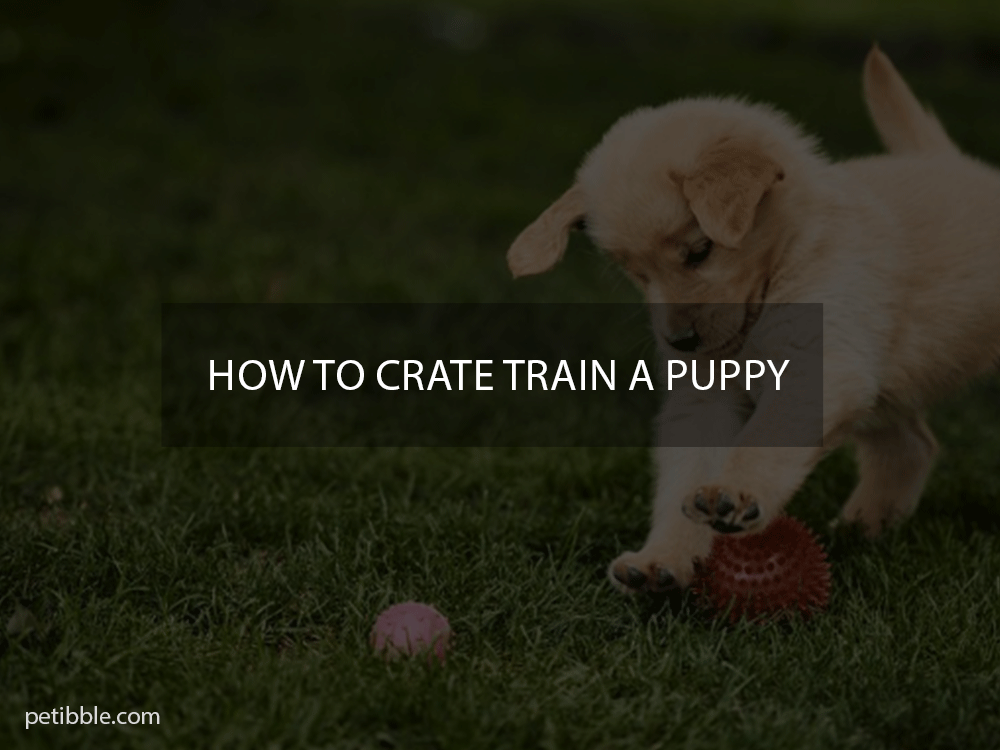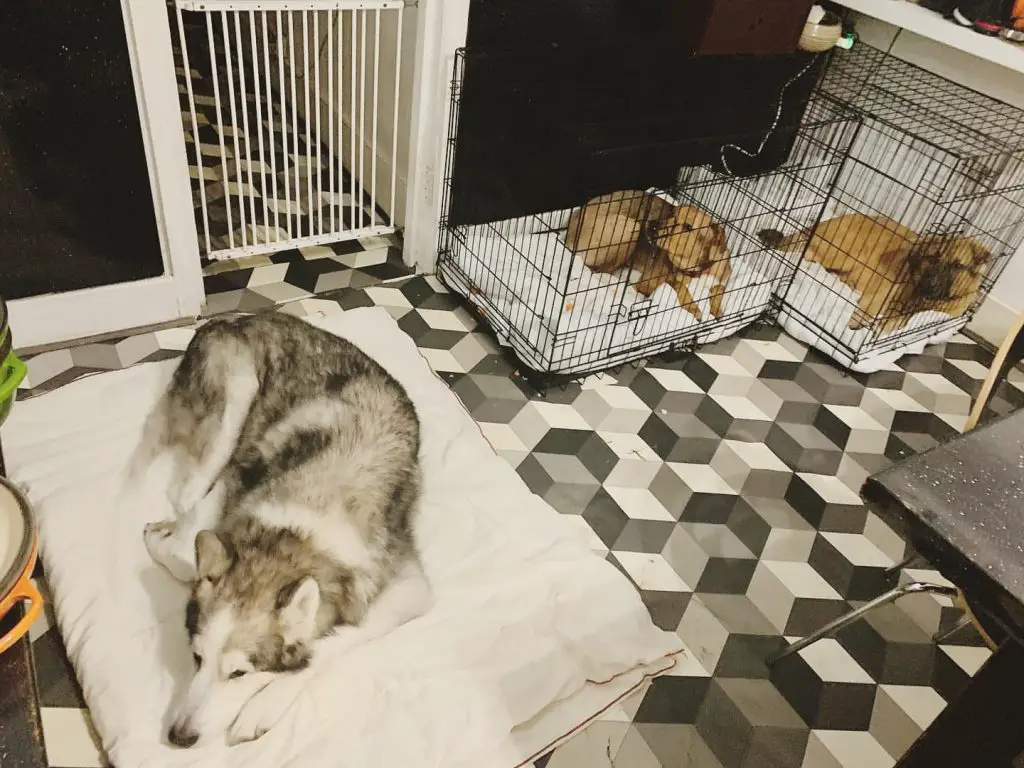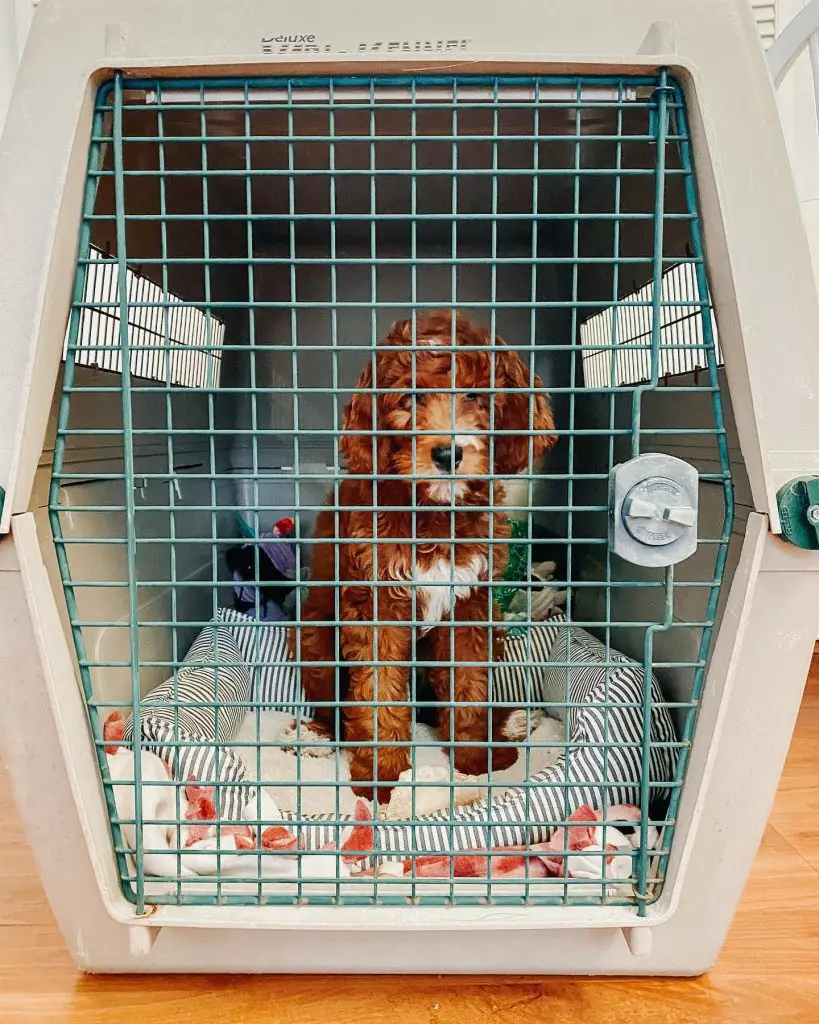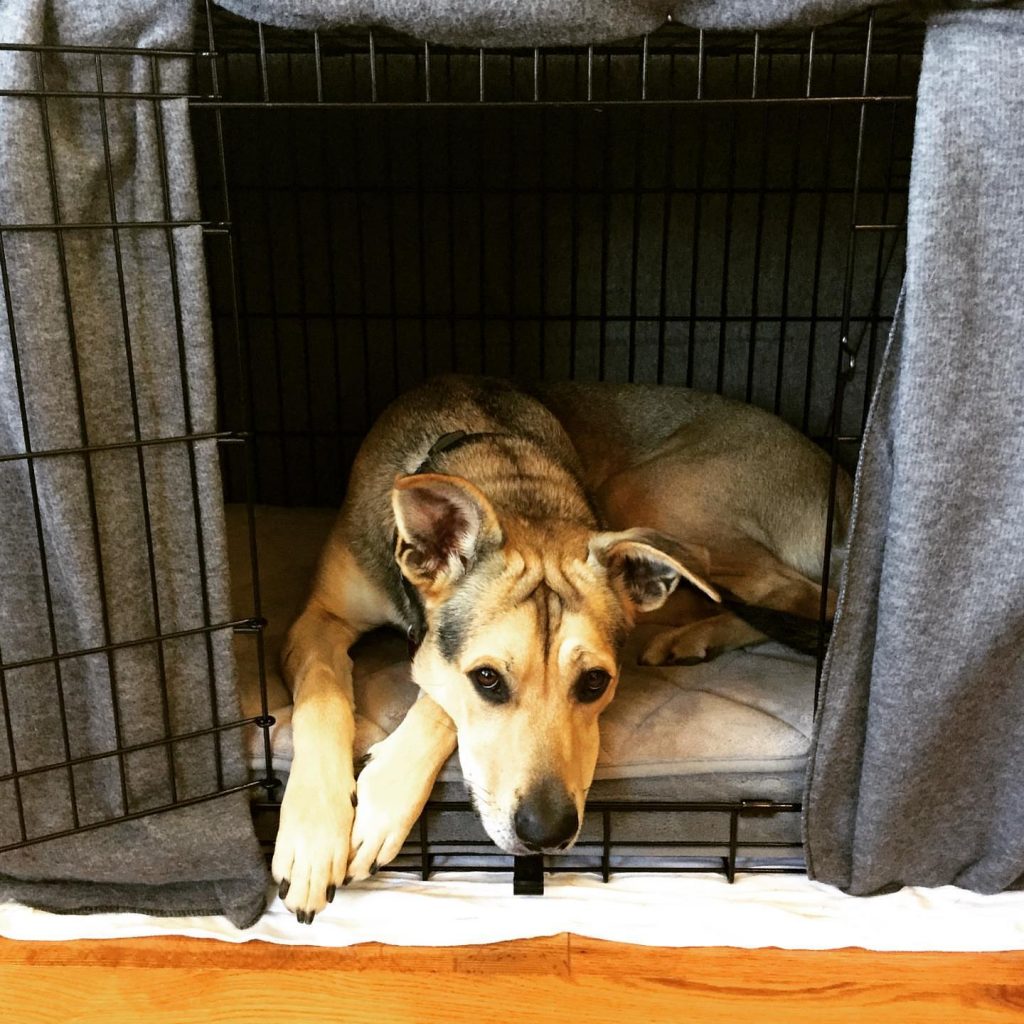How to Crate Train a Puppy is one of the most important things you can do to help your new puppy adjust to his new surroundings. When your puppy is confined to a small train in the crate, there are certain behavioral patterns that he’ll learn easier than others. The crate training process is relatively quick and easy once you have a little practice under your belt. This is why we felt that this particular subject deserves an article of its own.

How to crate train your dog or puppy?
Crate training is a great way to help your new dog or puppy feel comfortable and safe in their new home. It also helps with potty training and keeping them out of trouble when you can’t supervise them. Here are some tips on how to crate train your new pet:
1. Choose the right size crate for your dog or puppy. They should be able to stand up and turn around comfortably in the crate.
2. Put the crate in a quiet and peaceful location, away from any high-traffic areas in your home.
3. Put a soft bed or blanket inside the crate for your dog to lie on.
4. Introduce your dog to the crate slowly and calmly. Let them explore it on their own and get used to being in it.
5. Once your dog is comfortable with the crate, feed them their meals inside. This will help create a positive association with the crate.
6. When you leave the house, put your dog in the crate with a toy or bone to keep them entertained. Make sure not to make a big deal out of leaving or coming home, so they don’t start to associate the crate with being left alone.
Crate training takes time and patience, but it is a great way to help your new dog or puppy feel comfortable and safe in their new home. Follow these tips, and you’ll be on your way to a successfully crate-trained pet in no time!
A step-by-step guide for puppy crate training.
Crate training is the process of teaching your dog (Mostly used for a new puppy but also useable for an adult dog) to be calm and accepting of crate confinement. While there is some debate over this, crate training can be an invaluable tool for dog training.
Introduce the puppy to the crate. If you want your puppy to become comfortable with the training, have a good introduction.
Feed your pup’s meals in the crate. Feeding them their regular meals near puppys crate. This will create a pleasant association with the crate.
Crating periods. With no sign of fear or separation anxiety, you can confine your new puppy there for short periods while you’re home.
Create your young puppies when you leave the house. After you observe that your young puppy can spend about 30 minutes in the crate without becoming anxious or afraid, you can begin leaving them crated for short periods when you leave the house. Please put them in the crate using your regular command and a treat. When you return home, don’t reward your dog for excited behavior.

Crate your dog at night. By using regular commands and a treat, it may be a good idea to put the crate in your bedrooms during nighttime, especially if you have a puppy. Also you can use this for an older dog.
Crate training a puppy is all about taking it slow. It would be best to force your puppy into doing things that she isn’t ready for. This can lead to fear in her eyes and make her resentful about the crate.
You may like : When is the best time to euthanize your dog with lymphoma?
What type of crate is suites for your puppy?
The type of crate best for your puppy will depend on a few factors, such as size, age, and energy level. Here are a few different types of crates that you may want to consider:
1. Wire crates – These are great for puppies because they are lightweight and easy to move around. They also provide good ventilation and visibility, which can help your puppy feel less anxious in its crate.
2. Plastic crates – Plastic crates are a good option for medium to large dogs. They are durable and provide more privacy than wire crates. However, they can be more expensive and may not be as comfortable for your dog to lie in.
3. Fabric crates – Fabric crates are a good option for small to medium-sized dogs. They are lightweight and easy to transport and can provide your dog with a little more privacy than wire or plastic crates.
4. Soft-sided crates – Soft-sided crates are a good choice for calm and quiet dogs. They are often made from fabrics such as canvas or nylon and can be easily folded up for storage or transportation.
5. Metal crates – Metal crates are the most durable type but can also be the heaviest and most expensive. They are a good choice for dogs who are destructive or escape artists, as they will be unable to chew through or bend the metal bars.
What are the potential problems of crate training?
There are a few potential problems that you may encounter when crate training your dog, such as:
1. Your dog may bark or whine when they are first put in the crate. This is normal behavior, and it will eventually stop as your dog gets used to the crate.
2. Your dog may try to escape from the crate. This can be dangerous if your dog is not adequately supervised, so always leave them unsupervised in the crate.
3. Your dog may have accidents in the crate. This is usually due to anxiety or excitement, and it can be prevented by Proper housebreaking techniques and by taking your dog out frequently to use the restroom.
4. Your dog may become anxious or stressed in the crate. This can be caused by some factors, such as boredom, fear, or separation anxiety. If your dog is showing signs of stress, such as panting, pacing, or whining, you should consult a veterinarian or professional trainer to help you address the issue.
5. Your dog may become aggressive in the crate. This is usually due to frustration or fear, which can be dangerous for you and your dog. If your dog is showing signs of aggression, such as growling, barking, or lunging, you should consult a veterinarian or professional trainer to help you address the issue.
You may like : how to make your own bully sticks?
Unsupervised leaving may cause tantrums!
During puppy training season, you must never leave your dog unsupervised in his crate. This can lead to various problems, including getting bored, chewing, and digging at his feces. It would help if you always supervised your dog while he is in his crates. Puppies are prone to tantrums and can become very excited and destructive when left alone. While it is not possible to eliminate all of these negative feelings from your puppy, you can teach him not to be harmful by simply limiting his access to the house and limiting the times he can get out of his crate.

Potty Training.
A puppy crate is a valuable tool for your potty train. Young puppies have limited control and may need to go to the bathroom frequently. Set a strict schedule. Your puppy will eventually learn to expect toilet breaks if you stick to your schedule. He will know how long he can hold his bladder! Always Crate Puppy When Away. Dog crates can act as a safe place for your dog, much like a baby crib. When you can’t supervise your puppy, crate training is essential.
What you can do.
You can start taking your puppy out more frequently. It would help if you took your puppy to public places such as the park or the supermarket. By using crates, you will ensure that your puppy doesn’t develop a fear of being left alone. If you don’t want your puppy to be alone, don’t leave him home alone for more than fifteen to twenty-five minutes. By allowing him to remain in his crate, he will develop a sense of security.
You may like : everything you need to know about colby bloodline pitbulls
What you shouldn’t do.
It would be best not to use the dogs crate to punish your pet in crate training a puppy process. While it’s okay to give your dog a short time out, the crate should be used sparingly. However, you want to provide your dog with many pleasant experiences in her crate, including puzzle toys, treats, and meals to offset any unpleasant associations.
Do not force your dog to get out of the dog crate. To keep the crate a safe space for your dog, lure her in with toys or treats.

Impact of consistency.
One of the most important things to remember when crate training a puppy is consistency. Dogs are creatures of habit and will learn quickly if taught regular behavior. By setting a schedule and sticking to it, you will be able to crate train your new puppy without having to do nagging. Consistency will help your dog learn quickly and will ensure that he doesn’t feel as if he is being left out of the loop. If you are consistent with him, he will begin to develop a routine of going to bed at the same time each night, eating simultaneously, and sleeping with the door open.
Once you have crate trained your puppy, you will need to enforce the new habit. Do not leave your dog there for extended periods. If you are taking a trip, leave him with you for the entire trip. Try to get into the habit of leaving him in there just a couple of hours in total, because you will need to let him out regularly to prevent him from developing any bad habits.

Cons and Pros of Crate Training.
Cons of Crate Training.
- Some dogs may feel isolated in crates.
- It often takes a long time for a puppy to get used to being crate.
- Dogs who can’t control their bladders or bowels can develop other illnesses if kept in crates and cannot escape messes.
Pros of Crate Training.
- Puppy won’t be able to destroy anything.
- Puppies won’t soil carpets or other areas of the home.
- Crates keep your puppy safe and secure when you can’t supervise.
- Crates are effective potty training tools.
- Crates provide comfortable confinement during parties if your puppy is overexcited or overwhelmed.
- Crates reduce the risk of injury or death in the incident of a car accident.
Potential problems.
It can be hard to tell if your dog is whining or crying in its crate at night. Your dog won’t be rewarded for whining if you have followed the training as mentioned above methods. If this is the case, you can ignore their whining. Your dog will stop whining if they are trying to test you. Do not punish your dog for whining. If they are responsive and get excited, you can take them outside. It would be best if you made this a fun trip, not a playtime.
Separation anxiety: The crate is not a solution to anxiety. Although a crate can prevent destructive behavior from your dog, they could be injured if they try to escape. Counterconditioning and desensitization are the only ways to solve the separation problem. For assistance, you might want to consult an animal behavior specialist.

Conclusion:
It takes patience and time to train a puppy in a crate. But, keep your eyes on target: giving your dog a safe and secure place to call his own. Remember that every dog is unique, just as humans. You’ll need to be sensitive to his needs.





